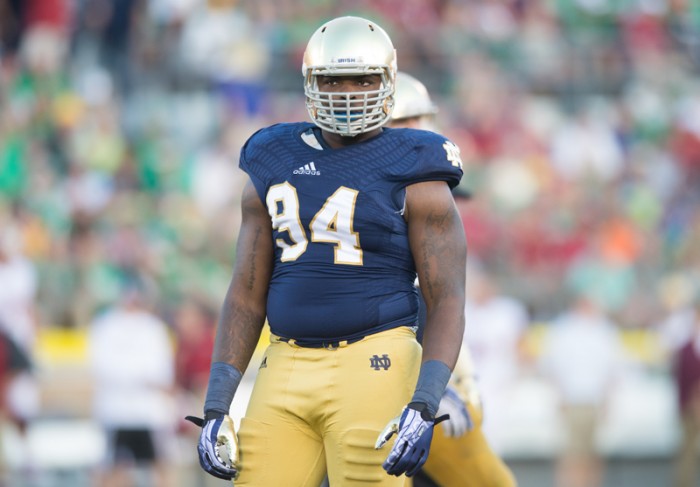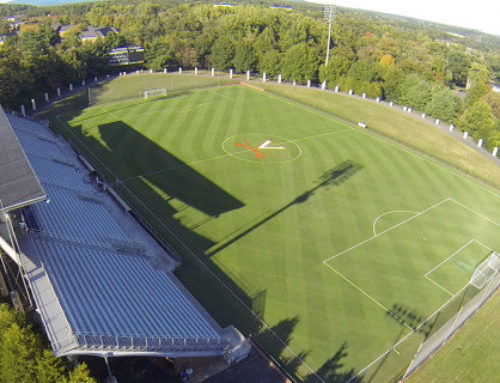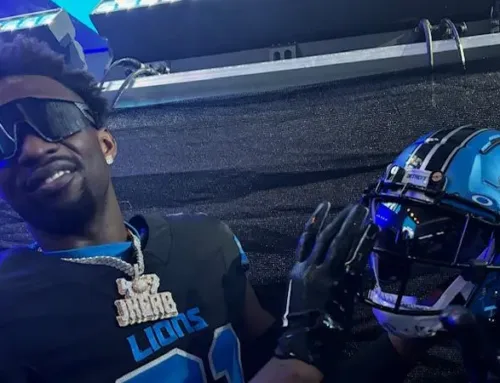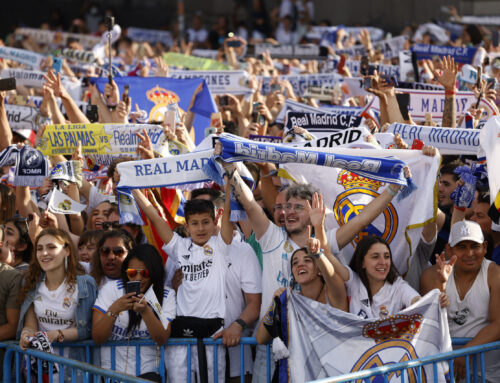We move on in our advanced stats look-ahead to the 2016 season. Next up, the second most important factor that leads to wins – efficiency.
Background: For those unfamiliar, most numbers included come from Bill Connelly’s S&P+ and Brian Fremeau’s FEI statistics – glossary of S&P+ terms here, and more efficiency stats at bcftoys.com. As always, ask away in the comments on any questions as well.
Offense:
2015 Ranks: #4 in Success Rate+, #2 Rushing Success Rate+, #9 Passing Success Rate+
How can it get better?
Let’s start with the running game – just like with explosiveness, there’s not a lot of room to get better. 2015 set the bar extraordinarily high – it would be hard to match even if everyone returned, and CJ Prosise, Ronnie Stanley, and Nick Martin aren’t walking back through that door (unless they visit, which would be great!). While all three rarely starred in the same game, over the course of the entire season Prosise, Adams, and Kizer formed a three-headed monster running the ball:

The offensive line paved the way for a lot of efficient running – the running backs were tremendous, but Harry Hiestand’s crew paved with way, ranking #4 nationally with an opportunity rate of 45.4% (Opportunity Rate = % of carries with O-Line produces at least five yards of rushing for the runner). Is it unfair to expect that number to stay top-five nationally? Maybe, but I would bet on it – Mike McGlinchey may not be Ronnie Stanley’s equal protecting the QB, but he easily could be run blocking. Quenton Nelson gains another year of experience under his belt, Alex Bars has starting experience and terrific pedigree, and Steve Elmer’s loss should be mitigated by Hunter Bivin’s emergence. I honestly think the run blocking falls off more from wide receivers than the offensive line – Will Fuller, Chris Brown, and Corey Robinson blocked outstandingly well on the perimeter – but that generally would impact explosiveness more than efficiency.
For all of last season’s success running the ball, there’s one small, glaring flaw. The Irish ranked just 58th nationally in power run success rate – converting first downs on 3rd/4th and two yards or less (also included – goal-line carries from inside the two). This stands out when you look at what you’d consider aspirational peers in terms of offensive line talent and running the ball – 66.7% success rate in these situations for Notre Dame, 75% for Alabama, 77.2% for Ohio State.
A running game this talented (with a massive offensive line) must be better next year in these situations. Combine (potentially) better play-calling, a more experienced QB, and Tarean Folston returning? I’m a believer. And without stepping on the toes of Eric’s offensive line love, my hypothesis is some jumbo sets with six or more offensive linemen would be extremely successful. You have talented, gigantic bodies like Tristen Hoge, Jimmy Byrne, and Colin McGovern in the two-deep, why not use them?
The other area that seems realistic for improving efficiency? Fewer negative plays – Irish backs were stopped at or behind the line of scrimmage on 20.5% of runs, ranking just 87th nationally. Overall it clearly didn’t doom the offense, since long runs and success on passing downs balanced things out, but those stuffed runs kill efficiency and snuff out drives that should end in points.
Why could it get worse?
In the passing game, there are a whole lot of targets from last season going to guys without a lot of experience. Fuller, Brown, Carlisle, Prosise, and Robinson received 77.2% of Notre Dame’s targets– and they generally did good things with passes thrown their way:

We often take for granted the ability of quarterbacks and receivers to be on the same page – especially in the modern no-huddle era. It wouldn’t surprise me to see young receivers have their moments where their inexperience shows at times next season, I just hope it’s not in critical situations.
The struggles in short-yardage situations seem like they should improve, but have also been a theme over the past few seasons. A slight decline in efficiency seems inevitable, but not by much – and if other areas improve, like finishing scoring opportunities and turnovers, the impact should be easily outweighed.
Projection: Slight decline to #5-10 nationally
Defense:
2015 Ranks: #33 Success Rate+, 39th Rushing Success Rate+, 44th Passing Success Rate+
How can it get better?
Efficiency wasn’t really the issue with the 2015 defense – 33rd overall in limiting opponents was pretty respectable, if not ELITE. Let’s start with what worked well that could be replicated again in 2016 – plugging gaps with the defensive line. The Irish ranked 21st in adjusted defensive line yards, and figure to be pretty stout against the run again. I don’t want to downplay the loss of Sheldon Day, but Isaac Rochell is a beast, and should start getting the recognition he deserves this year. Combine improvement from Rochell, Terry Jillery, and Daniel Cage, and the return of Jarron Jones? I don’t think penetration from the defensive line will be an issue.
As with the offense, the ND defense was also bad in short-yardage running situations, yielding a power success rate of 70.5% (96th nationally). Adjusting for opponents like Georgia Tech, Navy, Ohio State, and Clemson that are really good in this situation helps, but there’s just too much talent and size in the front seven for the Irish to be sub-par in this area.
Against the pass, you have to hope on improvement from the incumbent starters, Cole Luke and Max Redfield. For now, let’s go all Kevin Garnett (“anything is possibbleeeeee”) on Redfield’s final season. Doesn’t it feel like Shaun Crawford and Drue Tranquill have a higher ceiling in coverage that what KVR/Shumate provided last year? Russell was playing through injury and inconsistent most of the season, and while Shumate starred against the run, coverage and anticipation in the passing game were not his strong suits.
How can it get worse?
Despite a pass rush that ranged from mediocre to below average, the 2015 edition of the defense was very good (22nd nationally) limiting success on opponents’ passing downs. The swap of Crawford/Tranquill for KVR/Shumate? The flip side of the higher ceiling is that the youth and inexperience of that combination probably also has a lower floor. Shumate was a known commodity against the pass and the run, and from what we’ve seen from Tranquill, isn’t in pretty similar?
Jaylon Smith isn’t coming back, and neither is Joe Schmidt – if the defense is as complex is rumored, doesn’t that put a lot of pressure on lightbulbs to turn on for Nyles Morgan and the rest of the linebackers? Again, lots of veteran snaps to be replaced between Smith and Joe Schmidt’s departure.
Tying things together with last week’s post – what if small philosophical shifts to prevent the big plays of 2015 (playing a bit more conservatively) sacrifice efficiency? Blitzing less or more vanilla schemes could lead to more first downs given up while limiting the long touchdowns that scarred all fans last season.
My bet is on the defense to stay in a similar range – improving efficiency against the run, with slightly less success efficiency-wise against the pass. I think some improvement in standard downs success rate (53rd last season) will cancel out a small decline on passing downs (34th last year). Improving in power run situations could go a long way, but as much as I want to, I can’t bank on Redfield and the young guys to hold up on the back end consistently if the pass rush doesn’t get better at getting to opposing quarterbacks.
Projection: Stays in the range of #30-35 nationally





I can’t imagine the defense being better in any aspect without Day and Smith. I’m very high on Nyles Morgan, and he isn’t even in the same stratosphere as Smith. He’s a guy who could eliminate sweeps to the opposite side of the field! Teams would gameplan against him specifically. I think the run defense will suffer quite a bit without Smith out there as a deterrent.
No one player is going to be as good as Jaylon, no doubt. But if Jarron Jones can be 90% of what Sheldon Day was last year, the returning D-Linemen like Rochell/Tillery/Cage keep getting better? That doesnt seem crazy.
Same at LB – Morgan could be an upgrade over Schmidt, and while Coney or Onwualu or Martini won’t be Jaylon, if 2 of 3 positions improve, will it be a huge net negative? I doubt it. Lots of ifs here, but you never know – everyone assumed Clemson would fall apart on D last year without Beasley, Grady Jarrett, etc.
Sure, but we’re talking about the #1 linebacker in the country last year, probably the best linebacker of my lifetime at ND. He covered for so many weaknesses in this defense.
I’m looking at the sure things here; the 2 best players from last year’s defense are gone. I can’t see all of those ifs working out to mitigate the loss of those 2 guys.
Well… Admittedly, I’m the quintessential eternal optimist, so feel free to dismiss these thoughts and I promise I won’t be offended. But…
I think Cole Luke will be one of the best in the country. He’s playing for a first-day draft position. Max is Max, but if he falters I think Studstill will be capable in relief – if Studstill isn’t starting out of the gate. Tranquill is a fantastic football player, and while his coverage skills may not be ideal I think he’s at least replacement level for Shumate. Russell for Watkins is a little more questionable, but then again I think Russell’s performance last year was pretty uneven so, again, replacement level isn’t out of the question.
Day is a big loss, of course, but I think Jones, Rochell, Cage, Tillery, and Trumbetti, plus possible Kareem and/or Hayes, will be quite capable. Productive? Less certain, of course. Capable? Absolutely.
Linebacker is the big question mark. I said in another thread that the big question is whether [Morgan AND (Martini OR Barajas)] >= (Jaylon AND Schmidt). Jaylon was the ultimate eraser, but presumably with more range from Morgan the new WILL will have to do that much less. I wouldn’t be surprised to see the unit’s overall effectiveness stay relatively level.
[…] Rate is the primary measure of efficiency, which was covered in last week’s post here. In short, I expect Notre Dame’s offense to remain extremely efficient, with the possibility […]